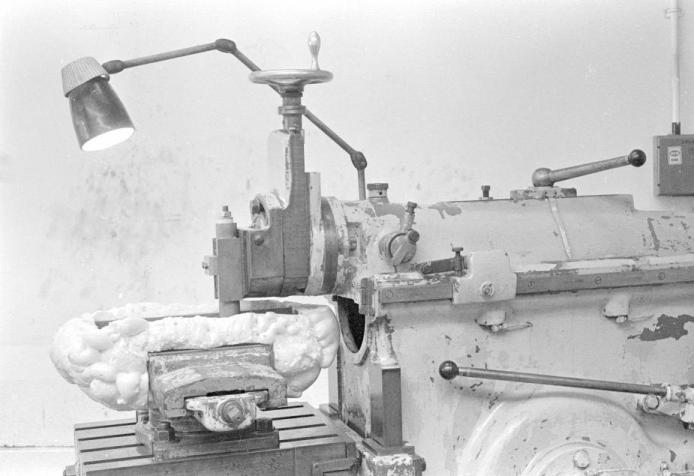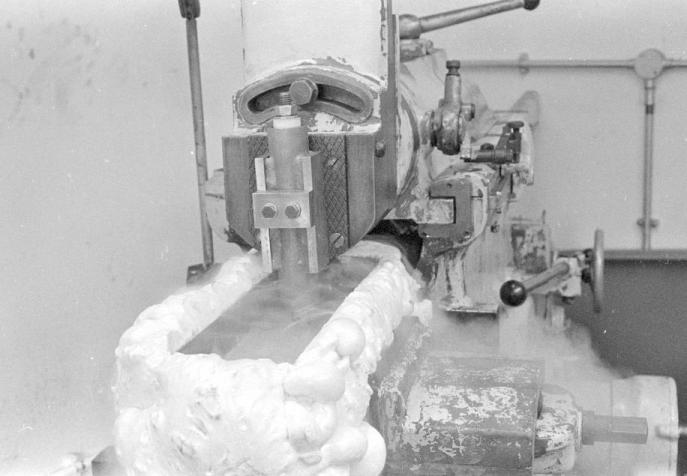
Investigating solute hydrogen distribution and movement in welds of structural steel, I needed a "direct" way of observing where was the hydrogen. I was already measuring how fast hydrogen was moving in the hours after weld completion and these rate graphs could be extrapolated back to "zero time" when the weld was just completed. But to banish doubt for such a commercially important issue, something really unmistakably direct was needed.
The answer was to machine the samples at liquid nitrogen temperature immersed in a tank of liquid nitrogen. Here is how I did it:


The tank on the machine's table and the toolbit holder in the toolpost - neither offers any metallic conduction path to the body of the machine. Both have polymer ("plastic") interposed between the them and the machine. With "plastic" having about a 200th of the conductivity of metal, you don't need much thickness of it to cut down heat flow from the machine into the tank to a tiny rate. The rig used only about a litre of liquid nitrogen every half an hour, even when machining.
The problem I was overcoming is that solute hydrogen moves so fast in steel (the reason it can cause the problems it does!) that you normally can't extract a sample fast enough to keep "captive" the hydrogen in that piece of the sample and measure it.
By freezing my samples in liquid nitrogen immediately after the weld
was completed, the hydrogen is "frozen" into place, making it stick to
atomic-scale defects in the steel. Liquid nitrogen boils at
I therefore set about machining the samples away until the centre of the welds were exposed as new surfaces. When I was ready I quickly warmed the samples to room temperature, smeared them in glycerol so that escaping hydrogen showed itself as bubbling in the glycerol.
My findings did confirm about the only previous direct measurement (Christensen, N. and Gjermundsen, K. and Rose, R., "Hydrogen in mild steel weld deposits", Brit. Weld. J., 1958, vol 5, number 6, pgs 272-281). That is an astonishingly small amount of knowledge about something which affects all steel welds made. Think oil rigs, pipelines bringing gas from Siberia to Europe and oil across Alaska, ships of half a million tonnes mass sailing the seas and so on.
Richard Smith, June 2005